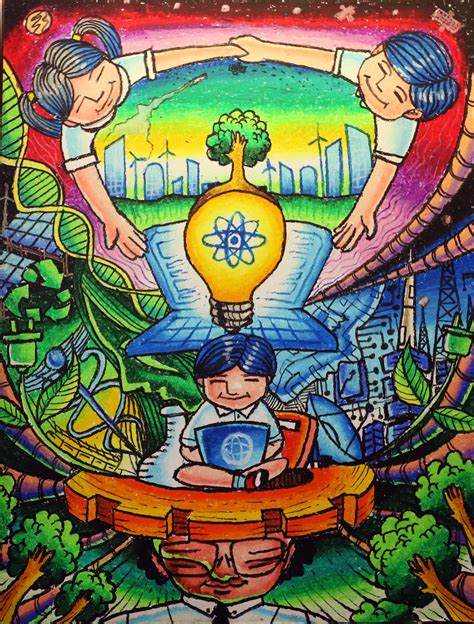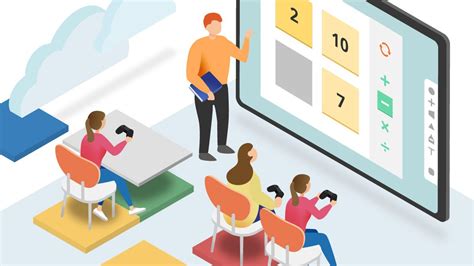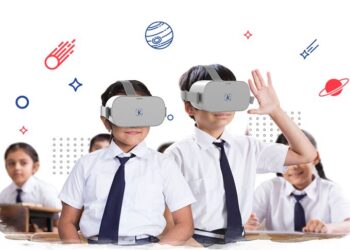In a world saturated with digital distractions, the battle for attention has never been more fierce. For educators, corporate trainers, and anyone tasked with imparting knowledge, the core challenge remains the same: how do you transform passive listeners into active, engaged learners? How do you make learning not just memorable, but genuinely desirable? The answer isn’t about working harder; it’s about working smarter. Enter gamification, a powerful and transformative strategy that is fundamentally reshaping the landscape of education and professional development.
Gamification is far more than just playing games. It is the art and science of integrating game mechanics and game-based thinking into non-game contexts to solve problems and, most importantly, to drive engagement. It’s a strategic approach that taps into our innate human desires for achievement, competition, collaboration, and reward. By understanding and applying the psychological triggers that make games so compelling, we can create learning experiences that are not only effective but also incredibly fun.
This article will serve as your ultimate guide to the world of gamified learning. We will explore what gamification truly is, dissect the psychological principles that make it work, and uncover its profound benefits. Furthermore, we will provide a practical blueprint for implementing these strategies effectively, examine real-world success stories, and address the potential pitfalls to avoid. Prepare to unlock a new level of learner engagement and educational success.
A. Deconstructing Gamification: More Than Just Points and Badges
To effectively leverage gamification, we must first understand its core concepts and distinguish it from similar terms. It’s a common misconception to use “gamification” and “game-based learning” interchangeably, but they represent two distinct approaches.
- Game-Based Learning: This involves using a self-contained game to achieve a specific learning objective. For example, playing a historical simulation game to understand the complexities of a particular era is game-based learning. The learning happens through the gameplay itself.
- Gamification: This is the application of individual game elements to an existing learning framework. You are not creating a full game; you are enhancing a course, a training module, or a classroom curriculum with mechanics typically found in games.
The power of gamification lies in its toolkit of engaging elements. While many are familiar with the basic trio, the true potential is unlocked by combining a wider array of mechanics:
- Points and Experience Points (XP): This is the most fundamental element. Points provide immediate feedback and quantify progress. Learners earn points for completing tasks, answering questions correctly, or participating in discussions, creating a tangible sense of forward momentum.
- Badges and Achievements: These act as visual representations of accomplishment. Earning a “Quick Starter” badge for completing the first module or an “Expert Collaborator” badge for helping peers provides recognition and social currency. They are the digital equivalent of a trophy.
- Leaderboards: Tapping into our competitive nature, leaderboards rank learners based on points or achievements. When implemented carefully, they can foster healthy competition and motivate individuals to increase their efforts.
- Progress Bars and Levels: Visualizing progress is a powerful motivator. A progress bar showing a learner is 70% of the way through a module encourages them to push through to completion. “Leveling up” provides a clear milestone of mastery and unlocks new content or challenges.
- Quests and Challenges: Instead of a simple to-do list, framing learning tasks as “quests” or “challenges” adds a layer of narrative and purpose. Completing a “quest” feels far more satisfying than simply finishing an assignment.
- Storytelling and Narrative: Weaving a compelling story around the learning material can dramatically increase engagement. Learners can become protagonists on a journey, with each module representing a new chapter in their adventure to defeat a villain (e.g., “The Procrastination Monster”) or discover a treasure (e.g., “The Certificate of Mastery”).
- Immediate Feedback: Games provide constant, instantaneous feedback. You know immediately if you’ve cleared a level or failed a task. Gamified learning replicates this by providing instant results on quizzes, real-time progress updates, and immediate rewards for correct actions.
B. The Psychology of Play: Why Gamification Hijacks Our Brains for Good
Gamification isn’t effective by accident; it works because it directly taps into the core drivers of human motivation. Decades of psychological research explain why these game mechanics are so adept at capturing and holding our attention.
- Motivation (Intrinsic vs. Extrinsic): Gamification brilliantly blends two types of motivation. Extrinsic motivation comes from external rewards, like points, badges, and leaderboard rankings. These are excellent for getting learners started. However, the ultimate goal is to foster intrinsic motivation—the desire to learn for the sake of learning. Well-designed gamification does this by making the learning process itself feel rewarding, satisfying our natural curiosity and desire for mastery.
- Self-Determination Theory (SDT): This influential theory posits that all humans have three innate psychological needs:
- Competence: The need to feel effective and capable. Gamification addresses this through leveling up, earning achievements, and overcoming challenges.
- Autonomy: The need to feel in control of one’s own choices. Gamification can provide this through branching learning paths or allowing learners to choose which “quest” to tackle next.
- Relatedness: The need to connect with others. This is facilitated through team-based challenges, social leaderboards, and collaborative problem-solving.
- The Power of Dopamine: Dopamine is a neurotransmitter associated with pleasure and reward. When we successfully complete a challenge, earn a badge, or see our name climb a leaderboard, our brain releases a small burst of dopamine. This creates a rewarding feedback loop, making us want to repeat the action. Gamification essentially creates a safe and productive environment to generate these satisfying “dopamine hits” through learning.
C. The Undeniable Benefits of Gamifying the Learning Experience

When implemented thoughtfully, gamification moves beyond a novelty and becomes a powerful pedagogical tool with measurable benefits for both the learner and the educator.
- Dramatically Increased Engagement: This is the most immediate and noticeable benefit. Gamified systems turn passive learners into active participants. The desire to earn the next badge or beat a personal high score keeps learners focused and involved with the material for longer periods.
- Improved Knowledge Retention: We learn best by doing. The active participation required by gamified learning—solving problems, making choices, repeating tasks for mastery—strengthens neural pathways. This active recall process leads to significantly better long-term retention compared to passively reading or listening.
- Fostering a Growth Mindset: Games teach us that failure is not an endpoint but a learning opportunity. When a learner fails a “level” in a gamified course, they are encouraged to try again, often with a new strategy. This builds resilience and fosters a “growth mindset,” the belief that abilities can be developed through dedication and hard work.
- Making Difficult Content Accessible: Complex or traditionally “dry” subject matter, such as compliance training or advanced mathematics, can be made much more palatable through gamification. Breaking down dense information into a series of manageable “quests” with clear rewards reduces overwhelm and learner anxiety.
- Providing Clear, Actionable Goals: Gamification excels at breaking down a large, intimidating goal (like completing an entire course) into a clear and visible path of small, achievable steps. This clarity eliminates confusion and gives learners a constant sense of purpose and direction.
- Encouraging Collaboration and Social Learning: Many gamified systems can be designed with team-based challenges or collaborative quests. This encourages peer-to-peer learning, communication, and teamwork, which are critical skills in both academic and professional settings.
D. A Blueprint for Effective Gamification Implementation
Simply throwing points and badges at a course is a recipe for failure. Effective gamification is a deliberate design process that aligns game mechanics with clear learning objectives.
- Define Your Objectives First: Before you think about a single game element, you must be crystal clear about what you want your learners to know or be able to do by the end of the experience. Every mechanic you choose must directly support these core objectives.
- Know Your Learners: Who is your audience? What motivates them? A group of competitive sales professionals will respond differently to leaderboards than a class of introverted art students. Conduct surveys or interviews to understand their preferences and tailor the experience accordingly.
- Craft a Meaningful Narrative: A good story can tie all the elements together. Frame the learning journey within a theme. Are the learners “detectives” solving a case? “Explorers” mapping a new territory? “Apprentices” mastering a craft? A narrative provides context and makes the experience more immersive.
- Balance Challenge and Skill: The tasks should not be so easy that they are boring, nor so difficult that they are frustrating. The goal is to create a state of “flow,” where the challenge is perfectly matched to the learner’s skill level, leading to deep focus and enjoyment.
- Integrate Meaningful Feedback: Feedback must be immediate, specific, and constructive. Instead of just “Incorrect,” a better response would be, “Not quite. Remember to consider the principle of X. Why not try again?” This guides the learner toward mastery.
- Launch, Measure, and Iterate: Deploy your gamified system and then track the data. Are learners getting stuck on a particular challenge? Are they ignoring a certain feature? Use analytics to identify what’s working and what isn’t, and be prepared to refine your design based on user behavior.
E. Gamification in the Real World: Success Stories
The theory of gamification is powerful, but its real-world application is what proves its value.
- Duolingo (Language Learning): Perhaps the most famous example, Duolingo has revolutionized language learning by turning it into a game. Users earn points for correct answers, maintain “streaks” for daily practice, and level up their skills. Its bite-sized lessons and constant positive reinforcement have made it a global phenomenon.
- Deloitte Leadership Academy (Corporate Training): To train its senior executives, Deloitte created a gamified platform. Leaders earned badges for completing modules and their progress was displayed on leaderboards. The result was a dramatic increase in user engagement, with participants returning to the platform daily.
- Classcraft (K-12 Education): This innovative platform transforms the classroom into a role-playing game. Students create avatars, work in teams, and earn powers (like being able to hand in an assignment a day late) by demonstrating good behavior and academic performance. It has been shown to improve student collaboration, behavior, and grades.
F. The Dark Side: Avoiding the Pitfalls of Poor Gamification

When designed poorly, gamification can backfire, leading to disengagement and cynicism.
- The Overjustification Effect: Be cautious of rewarding behaviors that are already intrinsically motivating. If a learner loves to read, adding excessive points and badges for reading can cheapen the experience and make them feel like they are only doing it for the reward, thus killing their natural love for it.
- Focusing on Rewards, Not Learning: The game elements should always enhance the learning, not distract from it. If learners are just clicking through content to earn a badge without actually absorbing the information, the gamification has failed.
- Creating Unhealthy Competition: While healthy competition can be a motivator, poorly designed leaderboards can de-motivate those at the bottom and create anxiety. Consider using personal leaderboards (tracking personal bests) or team-based competitions to mitigate this.
The Future is Playful
The evolution of gamified learning is only just beginning. The integration of technologies like Virtual Reality (VR) and Augmented Reality (AR) will create even more immersive and interactive learning “worlds.” Artificial Intelligence (AI) will enable hyper-personalized learning paths, adapting challenges and rewards in real-time based on an individual learner’s performance.
In conclusion, gamification is not a fleeting trend; it is a profound shift in our understanding of motivation and engagement. It provides a robust framework for creating learning experiences that are active, visible, rewarding, and deeply human. By thoughtfully applying the principles of game design, we can unlock the potential in every learner, transforming education from a passive requirement into an exciting and lifelong adventure.












